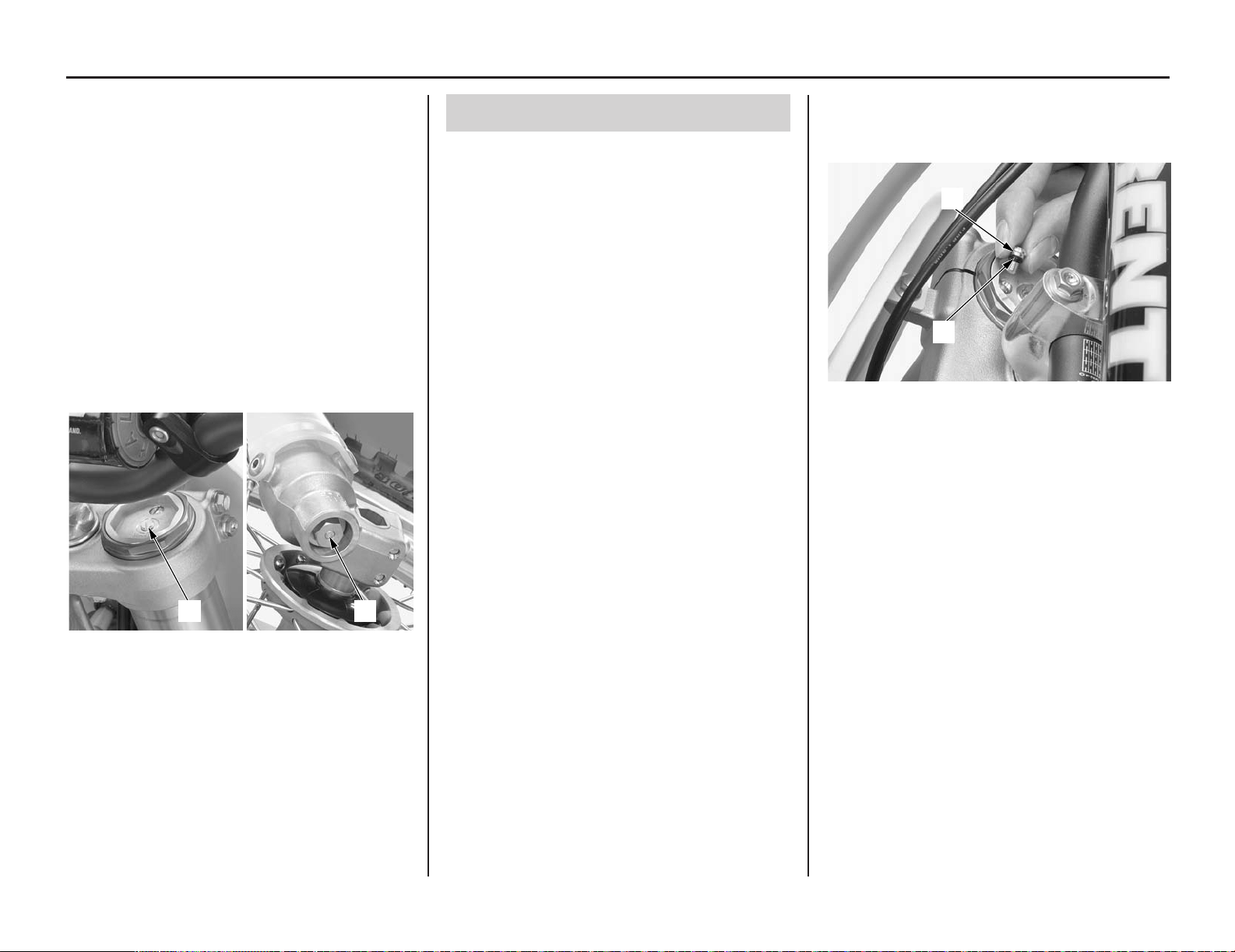Loading ...
Loading ...
Loading ...

112 Adjustments for Competition
Front Suspension Adjustments
The front suspension can be adjusted for the
rider’s weight and riding conditions by using one
or more of the following methods:
•
Oil volume — The effects of higher or lower
fork oil capacity are only felt during the final
3.9 in (100 mm) of fork travel.
•
Compression damping — Turning the
compression damping adjuster (1) adjusts how
quickly the fork compresses.
•
Rebound damping — Turning the rebound
damping adjuster (2) adjusts how quickly the
fork extends.
•
Fork springs — Optional springs are
available in softer types than the standard rate
(page 156).
(1) compression damping adjuster
(2) rebound damping adjuster
(1)
(2)
Front Suspension Air Pressure
Air is an unstable gas which builds up pressure
as it is worked (such as in a fork). Air pressure
acts as a progressive spring and affects the entire
range of fork travel. This means the fork action
on your CRF will get stiffer during a race. For
this reason, release built-up air pressure in the
fork legs between motos. Be sure the fork is
fully extended with the front tire off the ground
when you release the pressure.
The standard air pressure is 0 psi (0 kPa, 0
kgf/cm
2
). You may relieve accumulated air
pressure in the fork legs by using the fork air
pressure release screws. The front wheel should
be off the ground before you release the pressure.
The air pressure should be adjusted according to
the altitude and outside temperature.
1. Place an optional workstand under the engine,
so that the front wheel is off the ground.
Do not adjust air pressure with the front wheel
on the ground as this will give false pressure
readings.
2. Remove the fork air pressure release screw (1).
3. Check that the O-ring (2) is in good condition.
(1) fork air pressure release screw (2) O-ring
(1)
(2)
4. Install and tighten the fork air pressure release
screw to the specified torque:
0.9 lbf·ft (1.2 N·m, 0.1 kgf·m)
Loading ...
Loading ...
Loading ...